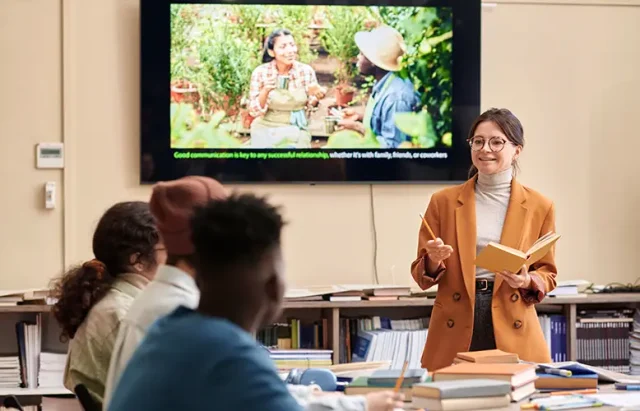
Did you know that students forget about 70% of what they learn within 1-2 days? This is where audio-visual (AV) tools become a crucial part of learning and education. Audio visual tools have a wide range of multimedia resources.
AV tools not only help teachers provide more value in classrooms but also help online audiences retain information better while keeping them engaged longer. For example, casino websites like the new sweepstakes casinos use audio-visual elements to enhance the gaming experience and keep players engaged.
This article discusses the role of audio-visual software in education. You will learn more about interactive whiteboards and multimedia presentations.
Role of Audio-Visual Tools in Education
Audio-visual tools make education more engaging and fun. They bring lessons to life and deliver a better understanding of the curriculum. Educators use these videos and sounds to accommodate diverse learning types.
AV tools in smart classrooms use visual and auditory stimuli to enhance education.
Visual Stimuli
AV tools, including animation, videos, images, and infographics, draw students’ attention. They break down complex concepts into digestible and appealing parts.
Auditory Engagements
Auditory tools include songs, dialogues, sound effects, and music. These, along with visual stimuli, increase understanding and retention.
Bridging Gaps
AV tools help understand the practical application of academic theories. Students feel more curious and are aware of the purpose of their lessons.
Type of Audio-Visual Tool
AV tools are the best resources for catering to most learning styles. Multimedia categories include many learning materials.
Let us take a look at some of them.
| Interactive whiteboards | These are digital and interactive boards connected to smart projectors. Educators can interact with the content while demonstrating lessons in class. |
| Learning applications | Learning or educational applications create content that is interactive and self-paced. Students lead their learning curve. |
| Interactive projectors | It encourages collaborative and hands-on learning. It also boosts student engagement by offering a blended learning format. |
| Graphic tablets | Teachers hand out these tablets in smart classrooms. Students can interact with the lesson during a live lecture. |
Multimedia presentations and interactive whiteboards are popular categories of audio-visual tools. We will discuss both in detail.
Interactive Whiteboard
Interactive boards include a display system connected to the projector and a computer. They have transformed from basic touch-sensitive displays to automated learning tools. Teachers create personalized learning experiences using controls, styluses, touch, and multimedia integration.
Here are their benefits in education:
- Students interact and learn through visual and audio experiences, boosting information retention.
- These boards have plug-and-play features and can connect to various platforms. Teachers can run videos, audio, illustrations, and other platforms, such as Google Classrooms.
- These boards can connect to the internet. Students can access important online tools while studying.
Multimedia Presentations
Multimedia is a collection of different media formats, such as video, images, audio, animation, and text. Educators create these presentations using platforms like Google Slides, Prezi, and Microsoft PowerPoint.
Educators use presentations to break down complex topics into pictorial information. They can design and improve these resources according to students’ needs.
Here are some benefits of multimedia presentations:
- Users can present large volumes of information in a limited space and format.
- Multimedia presentations mainly have images and infographics. It helps improve students’ curiosity, engagement, and retention.
There’s More!
The education industry will have more innovations in the coming decade. Wireless devices are the new trends in AV tools.
It will integrate AI (artificial intelligence) into upcoming audio-visual devices. AV tools will use cloud systems to increase collaboration in the education industry.
Companies are working to make these devices more cost-effective and environmentally friendly.





